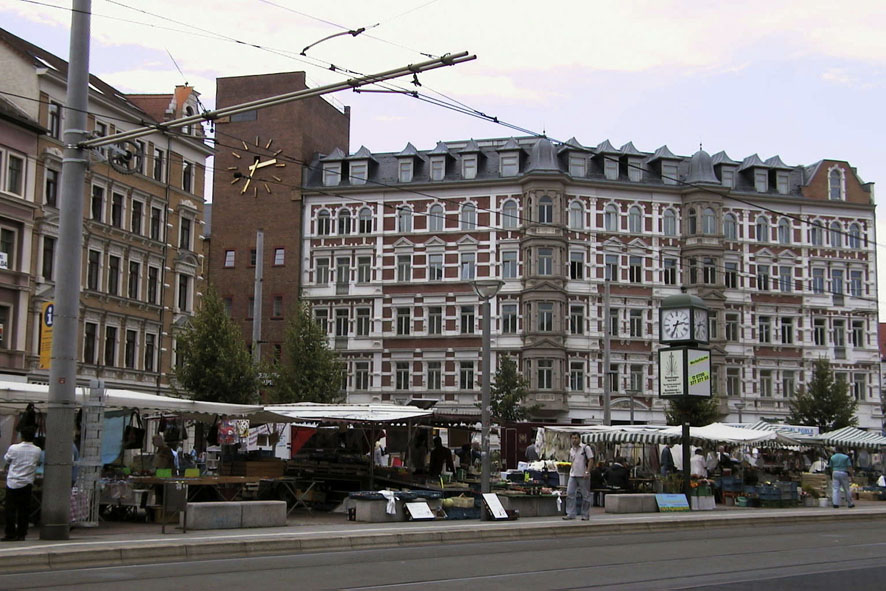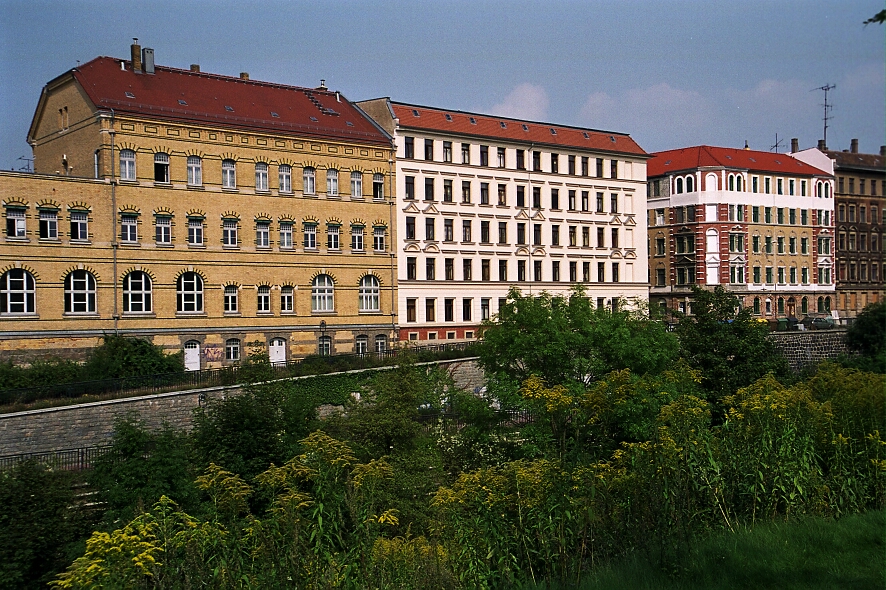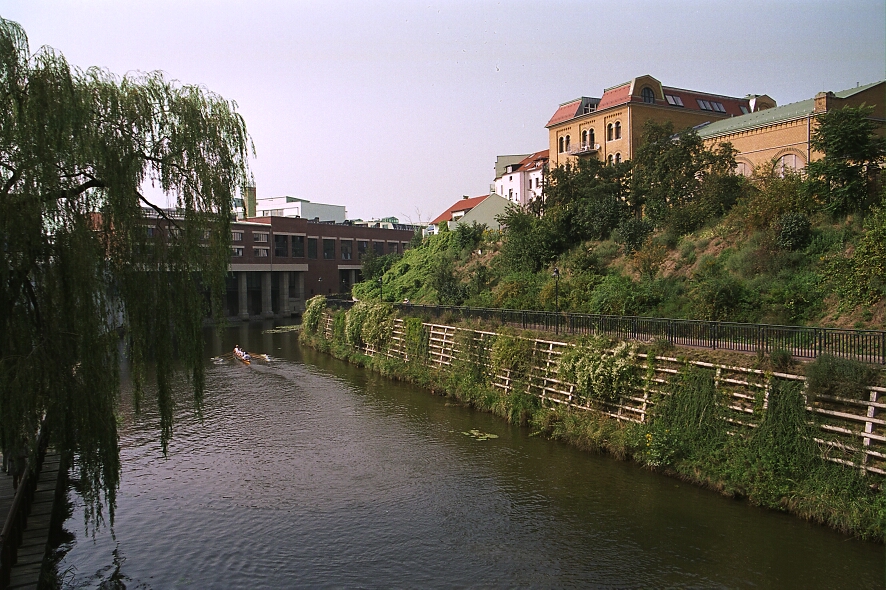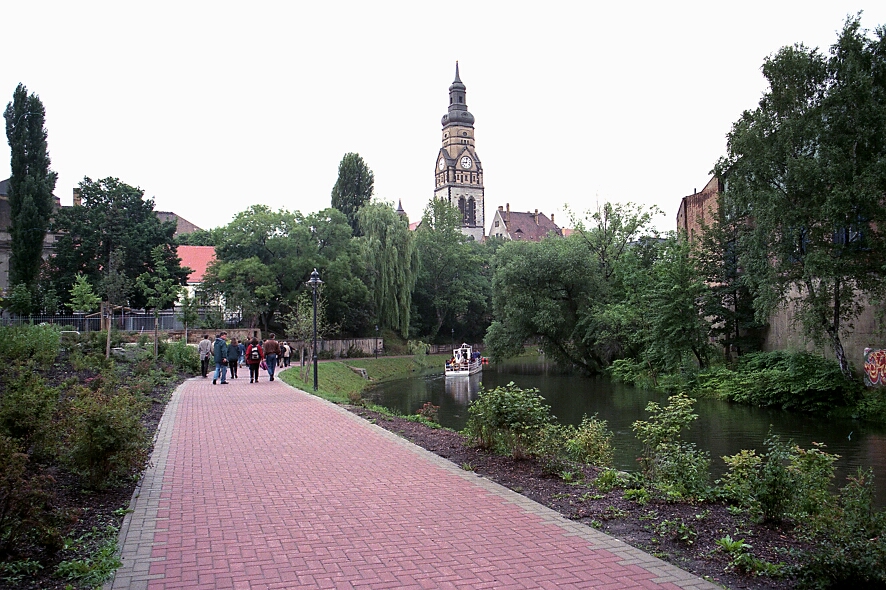Press release from September 8th, 2005
The mixture matters!
What concepts make inner city life more attractive?
Leipzig. Over two days, from 14th to 15th September, around 50 scientists, practitioners and other experts from eight countries will participate in a conference in the trade fair city of Leipzig to discuss reurbanisation strategies for inner-city residential areas. Reurbanisation is a comprehensive concept that explains how and why inner-city residential areas can revitalise their attractiveness for diverse population groups and types of households. Over the past three years experts have carried out research on this topic not only in Leipzig but also in Ljubljana in Slovenia, León in Spain and Bologna in Italy. ‘Re Urban Mobil’, as this project is called, is funded by the European Union and is coordinated by the City of Leipzig Office for Urban Regeneration and Housing Development (ASW), while the Centre for Environmental Research (UFZ) in Leipzig Halle is responsible for its scientific approach.

The new Lindenauer Markt in Leipzig-West
Foto: Annegret Haase/UFZ

New habitation at the Karl-Heine-Kanal in Leipzig-Plagwitz
Foto: Norma Neuheiser/UFZ

New habitation at the Karl-Heine-Kanal in Leipzig-Plagwitz
Foto: Norma Neuheiser/UFZ

New parkway in Leipzig-Plagwitz
Foto: Norma Neuheiser/UFZ
Many European cities are currently faced with the same problem: the industrial base is in decline, unemployment rates are rising and people are moving away. And it is not only the social and ethnic frameworks of entire neighbourhoods that are in a state of flux. The age structure of the population and household sizes are also undergoing remarkable changes. Sociologists refer to these processes as demographic change. This is a development that also has visible effects in the neighbourhoods: older housing stock in inner-city districts is particularly affected by vacancy and dilapidation. As more and more people leave these areas, entire districts lose their original function. The very existence of the fabric of historically valuable buildings – which are both cultural heritage and symbolic link between the city centre and its periphery – is threatened. What are the prospects to counteract this trend?
Against this background, more and more cities are searching for concepts to make such districts more attractive, to motivate people to stay there and even to encourage others to move in. Due to the extremely complex nature of these problems, sociologists, demographers, town planners, architects, lawyers, economists and urban ecologists are cooperating on this research project. "Increasingly the traditional family structure is being replaced by groups of people simply living together for a limited period of time, " explains Sigrun Kabisch of UFZ. "New household structures also demand a new design for residential units. Currently there is a trend towards larger units providing both space for the flat-sharing community and the single individual." In addition, moderate prices and green spaces nearby are important criteria for the choice of the housing location. According to UFZ experts these new household types are a key factor in finding solutions for the problems of Leipzig districts such as Altlindenau and Neustadt/Neuschönefeld. As Sigrun Kabisch states, "Particular population groups can function as stabilising elements, where a suitable housing offer and appropriate residential environment are available – and the mixture matters."
The final conference of the EU project ‘Re Urban Mobil’ is part of the ‘Leipzig: City in Transformation - Living Unlimited’ action week, which runs from
10 September to 18 September 2005. Within a very short period of time Leipzig has experienced a fundamental process of transformation. In the course of this,
new kinds of free space have come into being that can only exist in a ‘de-densified’ city: new parks, temporary green spaces, short-term usage of old housing,
modern townhouses, lofts or spacious Gründerzeit (Wilhelminian-era) apartments. These new urban building blocks are to be presented by means of field trips and
walks through the city. Running in parallel will be a series of specialist events on themes in urban regeneration and reconstruction. For an entire week Leipzig
will be the meeting point for national and international specialists in this field. At the same time this week-long campaign offers the residents of Leipzig a
great opportunity to rediscover their own city.
Tilo Arnhold
Leipzig, September 2005
Further information is available from:
and from
Dr. Sigrun Kabisch
UFZ-Department Stadt- und Umweltsoziologie
phone: 0341-235-2366
e-mail: sigrun.kabisch@ufz.de
and
Ute Lennsen
Stadt Leipzig
Amt für Stadterneuerung und Wohnungsbauförderung
phone: 0341-123-5496
e-mail: ulenssen@leipzig.de
or
Doris Böhme / Tilo Arnhold,
Public Relations of Helmholtz Centre for Environmental Research – UFZ
Phone: +49-341-235-2278
e-mail: presse@ufz.de
